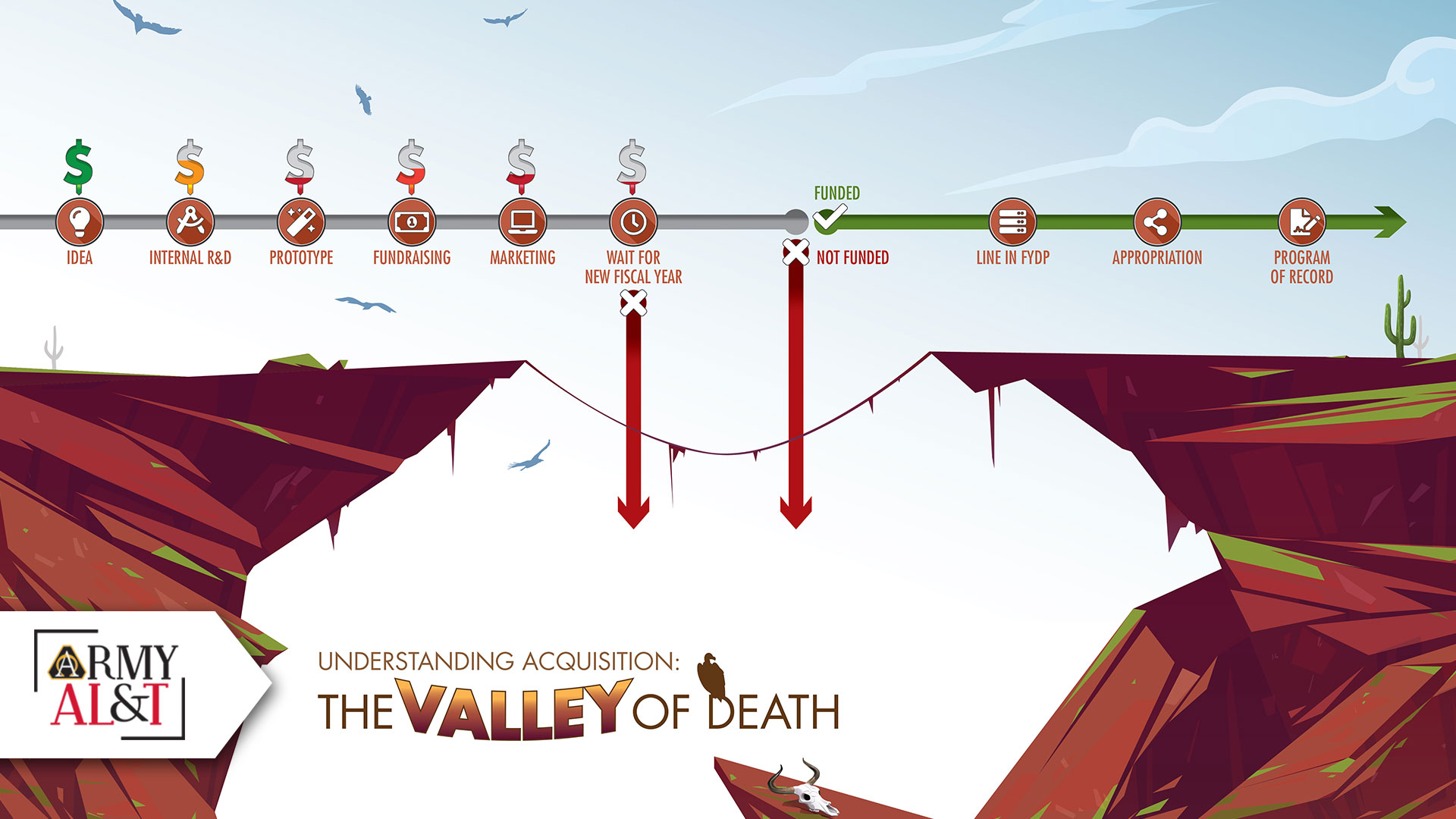
By John Dillard, Col. USA (Ret.) and Steve Stark
The valley of death or the chasm sounds like a place where vultures wheel in the hot desert air over the carcasses of the technologies that couldn’t make it across. It’s an apt metaphor, but the valley of death is not a place. It’s a condition.
The metaphor is applied to a wide range of products, including both incremental improvements and disruptive innovations, in many industrial and public settings. As a major developer and user of new technologies, DOD suffers greatly from the valley of death. In acquisition, the valley of death is often an unintended byproduct of an aging acquisition system that wasn’t built for the speed of modern innovation.
What it means, generally, when a program is lost in the valley of death is that the program was abandoned for at least one of four primary reasons: financial, technical, doctrinal or organizational culture.
FINANCIAL
Time and money are everything in acquisition, but timing of money is also important. If a new technology gets on DOD’s budget submission before the annual February deadline, it has a chance to be funded in the next fiscal year, which begins in October. However, that best-case scenario still leaves a gap of, at minimum, seven or eight months. That rosy scenario isn’t the norm. If a program isn’t in the budget request, it has to wait for the next one. It can take two years or more from viability for a program to get funded.
Congress does not always pass a budget on time. A stopgap continuing resolution does not provide for anything new. It would just fund at the same rate as the last budget. Such resolutions add to the time between viability and funding. That can be murderous for small business, though it’s not such a big deal for traditional defense prime contractors with a lot of irons in DOD’s fires. For a small company, even with a genius solution, that might as well be forever.
TECHNICAL
Most often, programs don’t get abandoned in the chasm because of any fault of their own, but there is a major exception. More than one program has been abandoned in the valley of death because a technology it depends on just can’t get past a technical readiness level that its requirement demands. Other times, technologies are overtaken by the speed of change in either advances in technologies or the nature of threats.
DOCTRINAL
The Army tends to want its acquisitions to fit within its doctrine. Its Big Six modernization priorities all fit within the doctrinal concept of multidomain operations. That’s because all six come from verified needs that have arisen as that operational concept evolved. A company could have a wonderful new invention or innovation, but if it falls outside that multidomain concept, it could come to a screeching halt. Doctrine can change when there’s an event or technology that fundamentally alters national security.
ORGANIZATIONAL CULTURE
Most of the materiel the Army acquires is in the category of innovation—a new way of using something or doing something, rather than that of invention, or something entirely new. The technologies behind the Big Six already exist. The Army wants better, faster, deadlier—a leap ahead in the states of those arts. The Big Six are acquisitions that are going to happen and will have plenty of juice to get past the valley of death. The acquisition culture, however, tends to be less enthusiastic when it comes to solutions that are genuinely novel, overtly impinge on a cultural norm or a well-established routine, or produce a “that’s not how we do it here” reaction.
In the graphic that follows, we have tried to show, as simply as possible, how the condition of the valley of death happens. There are dimensions that are not possible to show in a simple graphic. The condition is not guaranteed by fate, but built into the defense acquisition system.
Click on image to enlarge.








